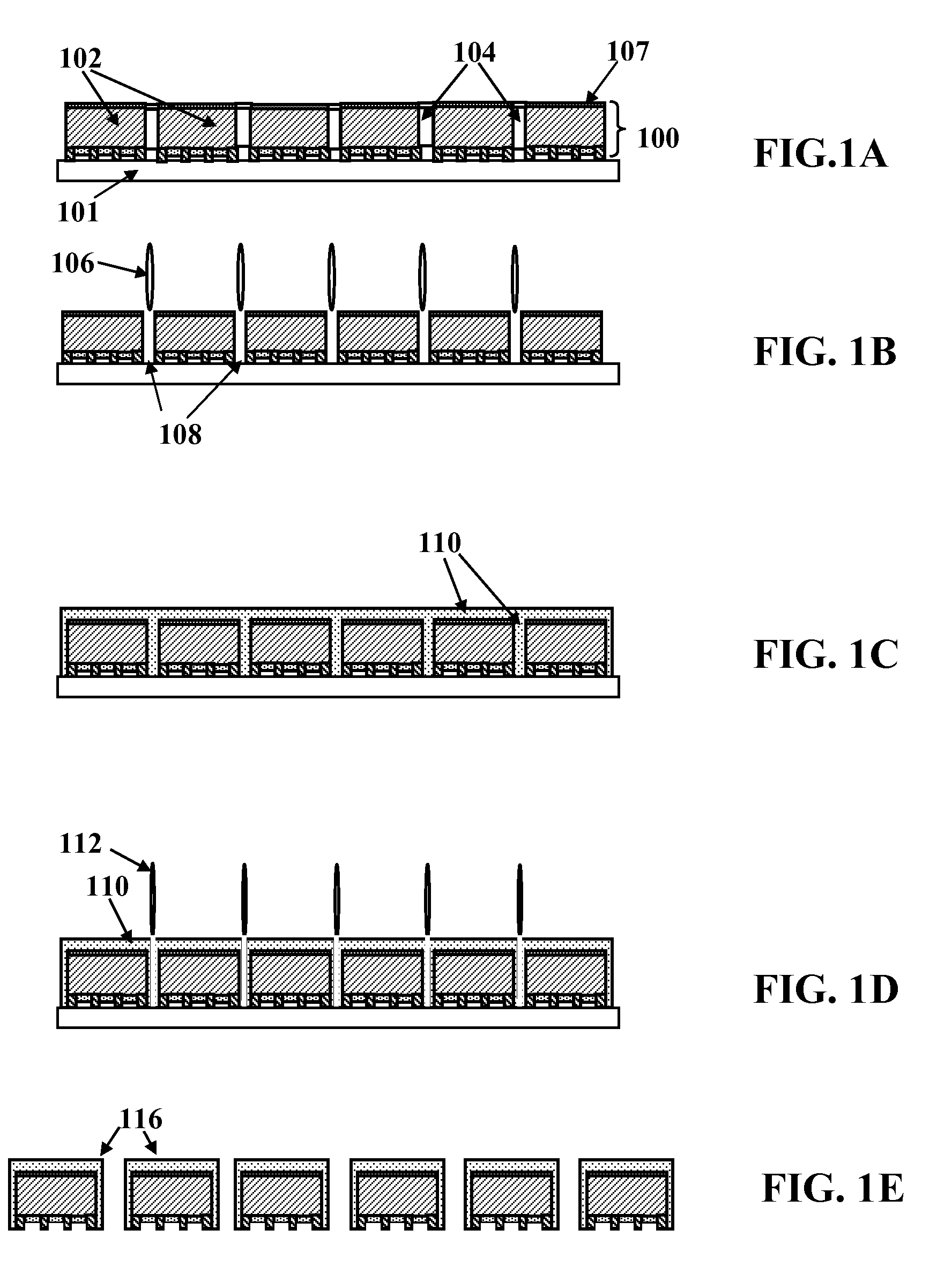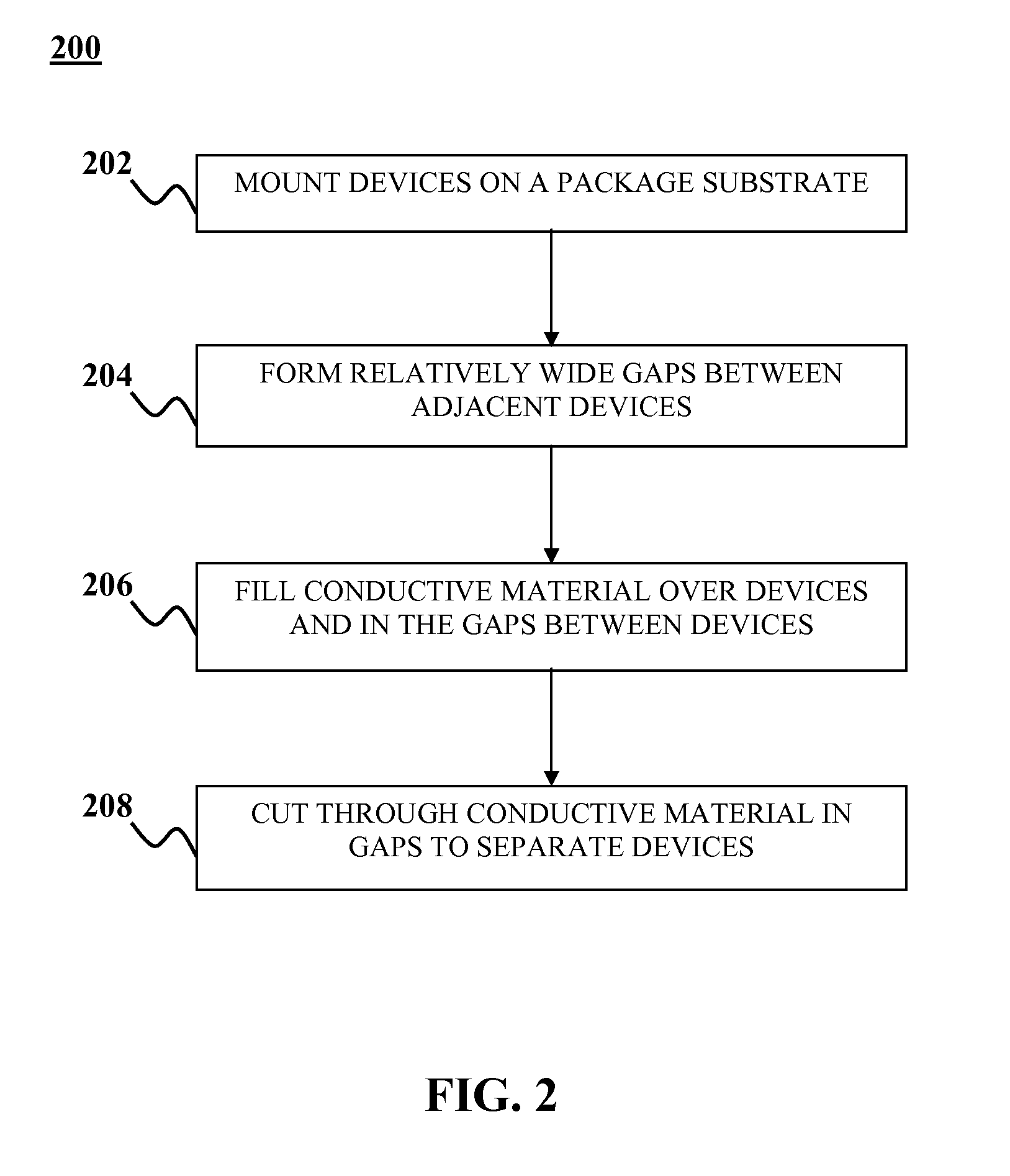Wafer level chip scale packaging
a chip scale and wafer-level technology, applied in the field of low-cost process of wafer-level chip scale package, can solve the problems of increasing the performance limitation factor of conventional package, affecting the efficiency of the process, so as to achieve the effect of simple wafer-level csp process, more machines, and less material consumption
- Summary
- Abstract
- Description
- Claims
- Application Information
AI Technical Summary
Benefits of technology
Problems solved by technology
Method used
Image
Examples
Embodiment Construction
[0014]Although the following detailed description contains many specific details for the purposes of illustration, anyone of ordinary skill in the art will appreciate that many variations and alterations to the following details are within the scope of the invention. Accordingly, the examples of embodiments of the invention described below are set forth without any loss of generality to, and without imposing limitations upon, the claimed invention.
[0015]An example of a process of making electrical interconnections according to an embodiment of the present invention is illustrated in FIGS. 1A-1E and FIG. 2. FIGS. 1A-1E are a sequence of schematic diagrams illustrating a process 200 outlined in the flow diagram of FIG. 2 In this example, electrical interconnections are made at a drain side of trench MOSFETS in a wafer level chip scale package (CSP).
[0016]Referring to FIG. 2, the method 200 may begin at 202 by mounting devices on a package substrate. For example, as shown in FIG. 1A, a...
PUM
 Login to View More
Login to View More Abstract
Description
Claims
Application Information
 Login to View More
Login to View More - R&D
- Intellectual Property
- Life Sciences
- Materials
- Tech Scout
- Unparalleled Data Quality
- Higher Quality Content
- 60% Fewer Hallucinations
Browse by: Latest US Patents, China's latest patents, Technical Efficacy Thesaurus, Application Domain, Technology Topic, Popular Technical Reports.
© 2025 PatSnap. All rights reserved.Legal|Privacy policy|Modern Slavery Act Transparency Statement|Sitemap|About US| Contact US: help@patsnap.com



